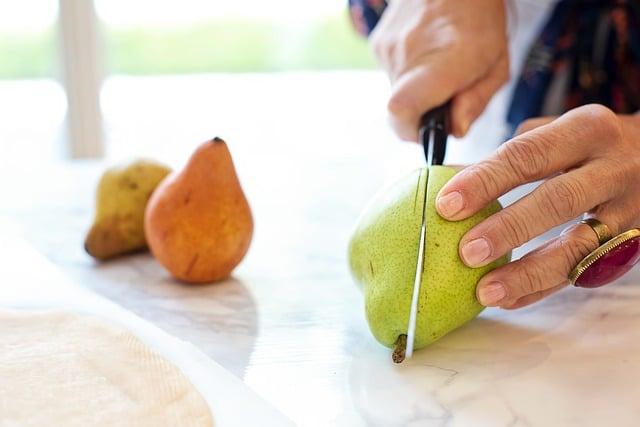Maintaining healthy blood pressure is a cornerstone of overall well-being, yet in today’s fast-paced world, it can often feel like a daunting challenge. High blood pressure, or hypertension, affects millions worldwide and can lead to serious health complications if left unmanaged. However, the good news is that dietary choices can play a pivotal role in keeping blood pressure levels in check. In this article, we will explore some of the best diet plans specifically designed to support healthy blood pressure. With an empathetic approach, we’ll guide you through various options, understanding that each individual’s journey is unique and that small, sustainable changes can make a significant difference. Whether you’re seeking to prevent hypertension or manage existing conditions, these diet plans offer practical and effective strategies to nourish your body and promote heart health. Let us embark on this path together, empowering you with the knowledge to make informed decisions for a healthier, happier life.
Understanding the Role of Nutrition in Blood Pressure Management
Managing blood pressure through nutrition involves more than just cutting down on salt. It’s about embracing a balanced diet that nourishes the body while helping maintain optimal blood pressure levels. Key nutrients play a significant role in this journey, and understanding which foods provide these nutrients is essential. Here’s a look at some vital components to include in your diet:
- Potassium: This mineral helps to balance sodium levels and ease tension in blood vessel walls. Foods rich in potassium include bananas, sweet potatoes, and spinach.
- Magnesium: Crucial for muscle and nerve function, magnesium can also help regulate blood pressure. Incorporate nuts, seeds, and whole grains into your meals.
- Calcium: Essential for maintaining the strength of blood vessels. Dairy products, tofu, and leafy greens are excellent sources.
For a clearer understanding, here’s a simple table highlighting some foods and their nutritional contributions:
| Food | Key Nutrient | Health Benefit |
|---|---|---|
| Banana | Potassium | Regulates sodium levels |
| Almonds | Magnesium | Supports muscle function |
| Kale | Calcium | Strengthens blood vessels |
By focusing on these nutrients, you can craft a diet that not only tastes great but also supports heart health. Remember, the journey to managing blood pressure is a holistic one, where food becomes your ally in maintaining well-being.

Key Nutrients to Focus On for a Heart-Healthy Diet
Adopting a heart-healthy diet doesn’t have to be a daunting task. By focusing on specific nutrients, you can support your cardiovascular system and maintain healthy blood pressure. Here are some key nutrients to prioritize:
- Potassium: This essential mineral helps balance sodium levels in your body, reducing strain on your blood vessels. Include foods like bananas, sweet potatoes, and spinach in your meals to boost potassium intake.
- Omega-3 Fatty Acids: Known for their anti-inflammatory properties, omega-3s can lower triglycerides and blood pressure. Enjoy fatty fish such as salmon and mackerel, or plant-based sources like chia seeds and walnuts.
- Fiber: A diet rich in soluble fiber can help lower cholesterol and blood pressure. Opt for whole grains, legumes, and fruits like apples and pears to enhance your fiber intake.
| Nutrient | Benefits | Food Sources |
|---|---|---|
| Potassium | Balances sodium levels | Bananas, spinach |
| Omega-3s | Reduces inflammation | Salmon, chia seeds |
| Fiber | Lowers cholesterol | Whole grains, apples |
Incorporating these nutrients into your diet can be a step towards maintaining a healthy heart and optimal blood pressure. Remember, small changes in your daily eating habits can lead to significant health benefits over time.

Incorporating Whole Foods and Balanced Meals into Your Routine
Embracing a diet rich in whole foods and balanced meals can be a game-changer for managing healthy blood pressure levels. Whole foods, which are minimally processed and retain their natural nutrients, provide essential vitamins, minerals, and fibers that are crucial for heart health. Incorporating these into your daily meals can help maintain optimal blood pressure and overall well-being.
- Fruits and Vegetables: Aim to fill half your plate with a colorful variety of fruits and veggies. They’re rich in potassium, which helps balance sodium levels and reduce blood pressure.
- Whole Grains: Opt for whole grains like brown rice, quinoa, and oats. These are high in fiber and help maintain steady blood sugar levels, reducing the risk of hypertension.
- Lean Proteins: Incorporate lean proteins such as chicken, fish, and legumes. They provide essential nutrients without the added fats that can contribute to high blood pressure.
- Healthy Fats: Include sources of healthy fats like avocados, nuts, and olive oil. These can improve heart health and lower bad cholesterol levels.
| Food Group | Examples | Health Benefits |
|---|---|---|
| Fruits | Bananas, Berries, Oranges | Rich in potassium and antioxidants |
| Vegetables | Spinach, Broccoli, Carrots | High in fiber and vitamins |
| Whole Grains | Oats, Quinoa, Brown Rice | Provides sustained energy and fiber |
| Lean Proteins | Chicken, Lentils, Fish | Essential amino acids with low fat |
Remember, the key to a balanced meal is variety and moderation. By thoughtfully incorporating whole foods into your daily routine, you can create meals that not only satisfy your taste buds but also support your heart health. Be mindful of portion sizes and aim to enjoy a diverse range of foods to reap the full spectrum of health benefits.

Practical Tips and Meal Ideas to Support Your Journey
Embarking on a journey to maintain healthy blood pressure doesn’t have to be overwhelming. Incorporating practical tips into your daily routine can make a significant difference. Here are some actionable ideas to help you along the way:
- Prioritize Whole Foods: Fill your plate with fruits, vegetables, whole grains, and lean proteins. These nutrient-rich foods support heart health and help keep blood pressure in check.
- Mind Your Sodium Intake: Reducing salt is key. Opt for fresh or frozen vegetables over canned ones, and season meals with herbs and spices instead of salt.
- Stay Hydrated: Drinking plenty of water can help your body function properly and maintain a healthy blood pressure. Consider infusing water with slices of lemon or cucumber for a refreshing twist.
When it comes to meal planning, variety and balance are essential. Here are some meal ideas to inspire you:
| Meal | Ingredients |
|---|---|
| Breakfast | Oatmeal topped with berries and a sprinkle of flaxseeds |
| Lunch | Quinoa salad with mixed greens, cherry tomatoes, chickpeas, and avocado |
| Dinner | Grilled salmon with steamed broccoli and brown rice |
| Snack | Carrot sticks with hummus |
Remember, small changes can lead to significant health benefits over time. Be patient with yourself and celebrate each step you take toward maintaining healthy blood pressure.








































